Seven Impossible Interviews Before Breakfast
# Oh-I’ve-Just-Stopped-Counting: J. Patrick Lewis
 November 2nd, 2010 by jules
November 2nd, 2010 by jules
 I’m sorry for the field of Economics, but happy for children’s literature, that J. Patrick Lewis, once upon a time, jumped careers. Yup, Lewis, who goes by Pat, was a Professor of Economics for thirty years — before devoting himself to full-time writing. I hate to use such a clichéd phrase (do authors roll their eyes at it?) but just have to introduce him by saying I think he’s a national treasure. Truly. If I’m counting correctly, he’s about to hit the 70 mark, as in he’s written almost 70 books, mostly poetry collections, for children. He’s been honored by the American Library Association and the Society of Children’s Book Writers and Illustrators and has established himself as one of this country’s most distinguished children’s poets and authors. He has earned wide acclaim for the vivid language (whether sophisticated and poignant or light-hearted and nonsensical) and lyrical writing of his poetry, written in a wide-range of styles and covering seven skerjillion (to be precise) subjects; his passion for visiting schools and working with children (“Getting children excited about the wonders of poetry—experiencing literature—is the reason I visit schools in the first place,” he writes at his site); and his work that consistently “respects the music of the written word” (also taken from his site). As Booklist once told it like it is, he is simply a “fine poet,” and School Library Journal once wrote, “no one is better at clever wordplay than Lewis.”
I’m sorry for the field of Economics, but happy for children’s literature, that J. Patrick Lewis, once upon a time, jumped careers. Yup, Lewis, who goes by Pat, was a Professor of Economics for thirty years — before devoting himself to full-time writing. I hate to use such a clichéd phrase (do authors roll their eyes at it?) but just have to introduce him by saying I think he’s a national treasure. Truly. If I’m counting correctly, he’s about to hit the 70 mark, as in he’s written almost 70 books, mostly poetry collections, for children. He’s been honored by the American Library Association and the Society of Children’s Book Writers and Illustrators and has established himself as one of this country’s most distinguished children’s poets and authors. He has earned wide acclaim for the vivid language (whether sophisticated and poignant or light-hearted and nonsensical) and lyrical writing of his poetry, written in a wide-range of styles and covering seven skerjillion (to be precise) subjects; his passion for visiting schools and working with children (“Getting children excited about the wonders of poetry—experiencing literature—is the reason I visit schools in the first place,” he writes at his site); and his work that consistently “respects the music of the written word” (also taken from his site). As Booklist once told it like it is, he is simply a “fine poet,” and School Library Journal once wrote, “no one is better at clever wordplay than Lewis.”
And BOY HOWDY have I wanted to have him visit 7-Imp for a long, long time now. And I enjoyed chatting with him so much that I’m going to get right to it. Not surprisingly, I’ve included as much art as I can in this post, including some spreads from two of his latest picture books. Enjoy. And I thank Pat for stopping by and having virtual coffee with me.
7-Imp: Can you talk about the genesis of two of your recent titles (not your most recent, to be clear), Skywriting: Poems to Fly and The House?
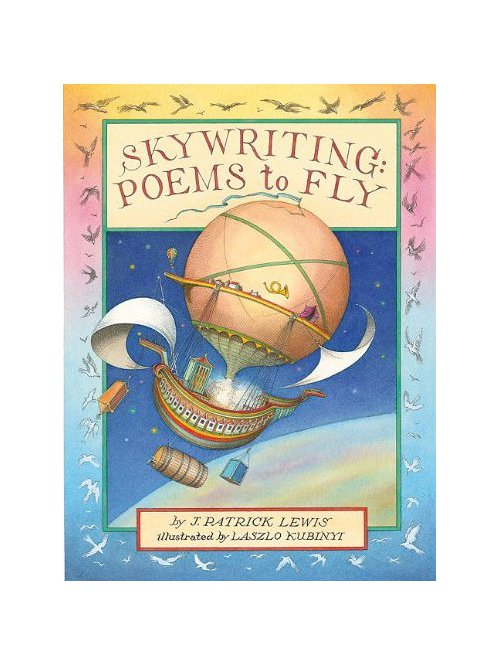
Pat: Skywriting began with a single poem that I wrote to honor the Concorde airplane. And that inspired the entire collection. The House, like its predecessor, The Last Resort, came from the fecund mind and fabulous pen of the Italian master Roberto Innocenti. His illustrations preceded the story/poem. I was asked to look at his inimitable art and craft a text to go with them. Daunting, to say the least. This was the biggest challenge I ever faced as a writer, but also the most rewarding.
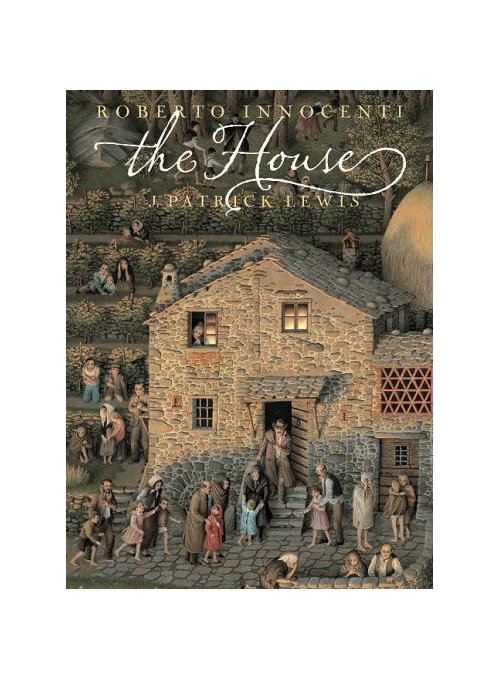
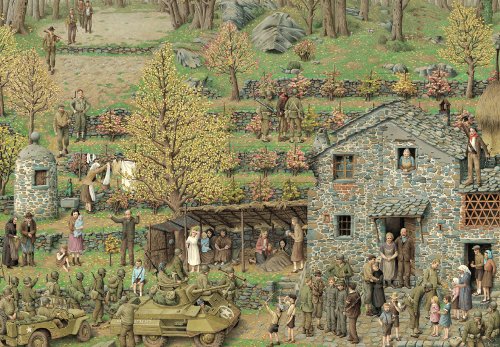
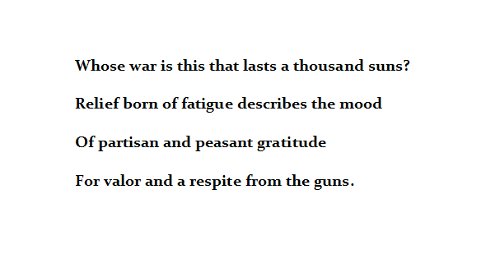
you’ll just have to wait a bit for the download.}
7-Imp: I always remember Jane Yolen saying she hates to be called “prolific,” that she prefers “versatile.” You get called prolific a lot, too. How do you feel about that word?
Pat: A “prolific” writer is one who might toss off books over the weekend as if writing were a holiday game. Only people who do not write children’s books can harbor such nonsense. Golf ball manufacturers, the makers of M&M’s, and paper shredders are prolific. I’d much prefer to be thought of as indefatigable, though Jane’s “versatile” would be okay, too.
7-Imp: You’ve written so much. Do you feel like there’s a title that stands out in your mind as a favorite, or one for which you had the most fun doing research?
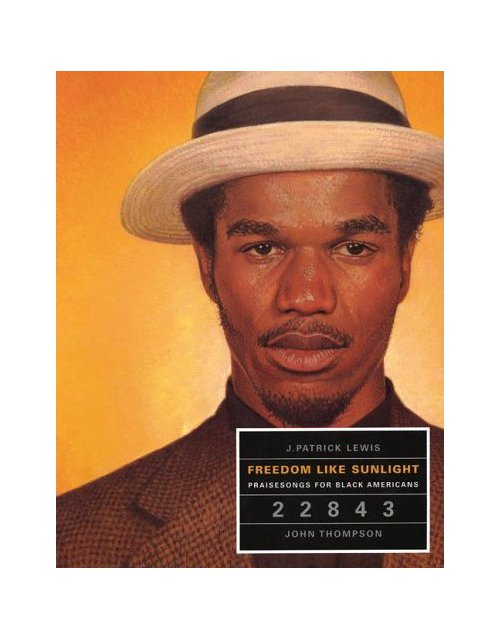
Pat: The books I’m proudest of are Freedom Like Sunlight: Praisesongs for Black Americans and Swan Song: Poems of Extinction (Creative Editions). In both of them, I was trying to add my small voice to a hallelujah chorus for the memorable.
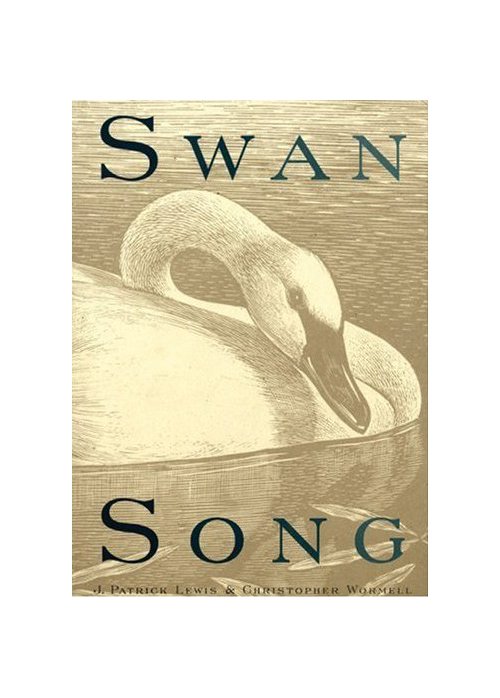
7-Imp: Do you ever get to collaborate with the illustrators on your titles?
Pat: I wish it were otherwise, but I never collaborate with artists. Happily, I’ve been very lucky with the supremely talented people who have been chosen to illustrate my books.
7-Imp: What was your road to publication?
Pat: Tortuous. And torturous. I won’t rehearse the litany of rejections with which most of your reader-writers are probably all too familiar, except to say that my exile in the desert of NO lasted seven lean years. And these days, in this parlous economy, rejections once again seem to come at you with the rapidity of tracer bullets.
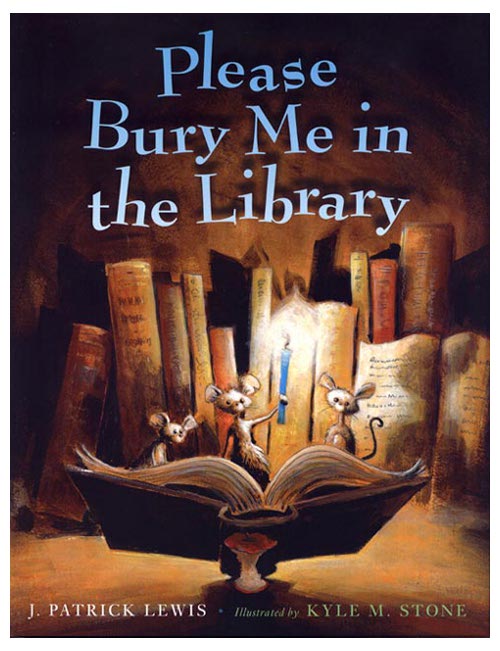
7-Imp: Can you tell me a bit about your writing process/”craft”? Do you outline plot before you write or just let your muse lead you on and see where you end up?
Pat: Leaving aside my nonsense verse, I first try to conceive a book-length collection of poems — about baseball, extraordinary women, civil rights, the Civil War, Galileo, Michelangelo, world records, et al. Once I have homed in on a particular subject, I spend a good deal of time a) imagining the verse form—free or formal—that would best serve each subject and b) doing research, which I love. The Muse rarely makes a visit. Perspiration trumps inspiration every time, at least for me. So, instead of waiting for her, I spend days writing and rewriting a single poem. The whole process has been best summed up in a six-line poem, “Sweat,” by the late and too-little-known James Hayford:
If it shows signs of sweat
It isn’t finished yet.
Sweat over it until
Your art conceals your skill.
Effort succeeds; success
Is looking effortless.
Or, as Fred Astaire said about dancing, “If it doesn’t look easy, you’re not working hard enough.”
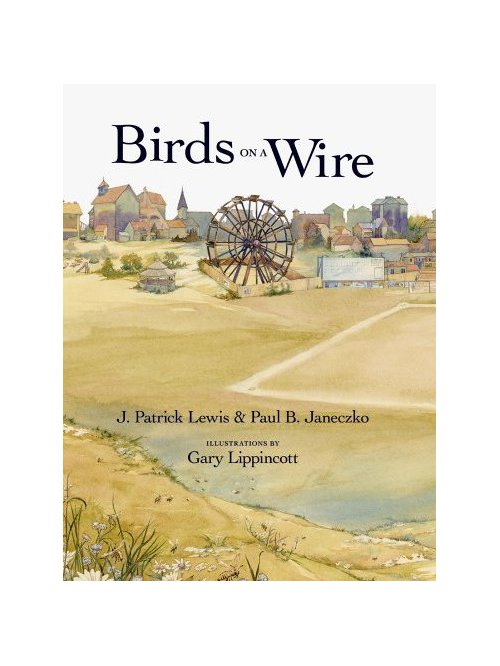
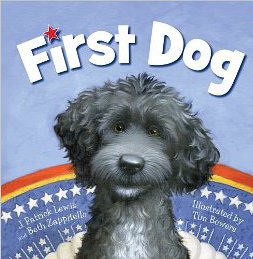 I’d like to also add that collaborating with another poet has long appealed to me. I’ve done two books with Paul Janeczko and one with Rebecca Kai Dotlich. Jane Yolen and I have three forthcoming books, and there will soon be one with Douglas Florian. Having written two non-poetry titles with my daughter, Beth Zappitello, has been especially rewarding for me.
I’d like to also add that collaborating with another poet has long appealed to me. I’ve done two books with Paul Janeczko and one with Rebecca Kai Dotlich. Jane Yolen and I have three forthcoming books, and there will soon be one with Douglas Florian. Having written two non-poetry titles with my daughter, Beth Zappitello, has been especially rewarding for me.
7-Imp: If you were in charge of language arts, particularly poetry, instruction in the elementary grades, what changes would you make, if any, to the way language arts and poetry are taught in schools today?
Pat: At the risk of sounding imperious, I would…
Ban all “poetry units.” Poetry should be a daily event in every class, not just in Language Arts.
Encourage poetry cafes where students, teachers, custodians, clerical staff, even parents are invited to share their work.
Work closely with school librarians to figure out ways of making the library as much of a magnet as the playground.
Encourage students to write every day.
Emphasize the supreme importance of strong action verbs, personified verbs.
Emphasize the unimportance of adjectives and adverbs.
Share poetry books of all schools, not just the ones you, the teacher, favors.
Introduce a daily “Metaphor Minute,” wherein students are given a single word and asked to define it metaphorically.
Applaud students’ failures, embrace them—failure is the only road to success.
illustrated by Valorie Fisher,
released by Schwartz & Wade Books in September
(Click each spread to enlarge.)
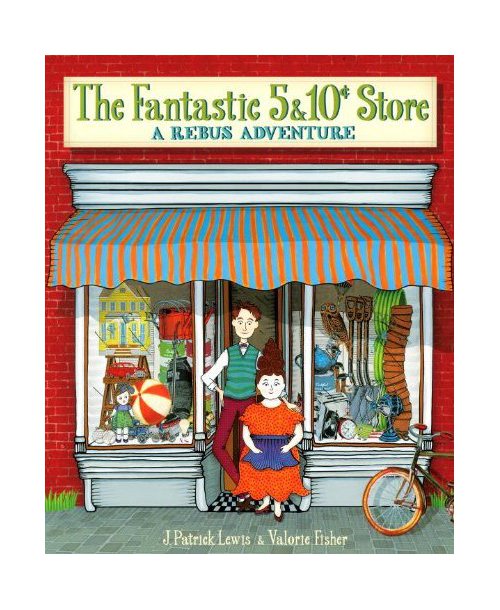
7-Imp: What do you learn from child poets who share their work with you?
Pat: Not to be mean-spirited but the short answer is, Very little. Child poets are practicing apprentices. They are learning the trade, and godspeed to them all. They have a long way to go. They should be encouraged to continue with those three most important words–rewrite, rewrite, rewrite. But it’s unlikely that their verses will serve as models for those who have been writing most of their adult lives.
7-Imp: What books and/or authors had an especially significant impact upon you as an early reader?
Pat: Picture books were not exactly in their prime in my youthful salad days. My blessed parents treated my brothers and me to that hoary series of large orange Childcraft books. So Lewis Carroll, Edward Lear, Aesop, folktellers like the Grimm brothers, and my second mother, Mrs. Goose, were my “early readers.” Literacy grew from the warm folds of our mother’s lap.
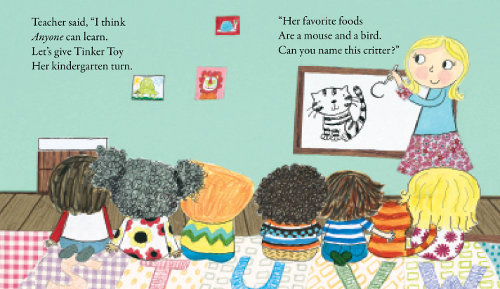


and released in July by Schwartz & Wade Books
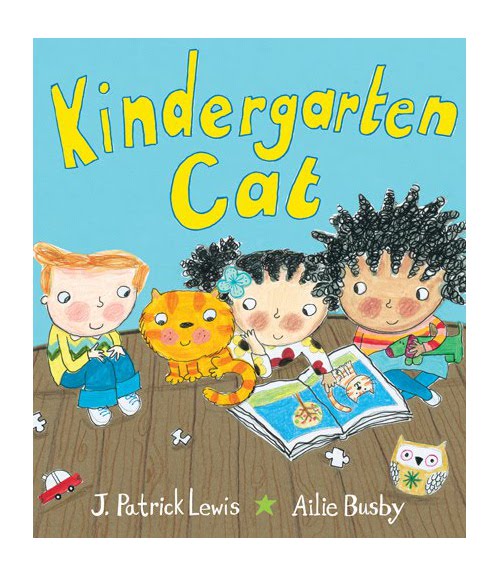
7-Imp: I know this sounds like a terribly cliché question, but I still think it’s a good one: What advice would you give to aspiring children’s poets?
Pat: Resist the urge to rhyme. Bad rhymes can give a reader indigestion, and since good rhyming requires much more time than young people have—you are much too busy living your lives, as well you should be—don’t put yourself in the box of rhymes and try to write your way out.
Become close friends with a dictionary and a thesaurus, no matter how nerdy that sounds.
Never spend more time writing than you do reading.
Never stop reading.
Don’t worry about getting your poems published.
(Click to enlarge spread.)
(Click to enlarge spread.)
illustrated by Lynn Munsinger (Chronicle Books, 2009)
7-Imp: Tell me and 7-Imp readers about some of your favorite poets (either contemporary or not-so) whom we have perhaps not heard of.
Pat: Here are a few contemporaries—or nearly so—in no particular order: Charles Causley, James Fenton, Wendy Cope, Kit Wright, Roger McGough, Adrian Mitchell, A.D. Hope, J.V. Cunningham, R.S. Gwynn, Gavin Ewart, A.E. Stallings, Tom Disch, Joyce LaMers, and Edmund Conti. Even though he is well-known, I must add X.J. Kennedy, who bridges the worlds of adult and children’s poetry effortlessly. (I’ve left out other American poets who write exclusively for children, since so many of them are my friends, and I’m afraid I might forget someone.)
The Underwear Salesman: And Other Jobs for Better or Verse,
illustrated by Serge Bloch
(Ginee Seo Books/Atheneum, 2009):
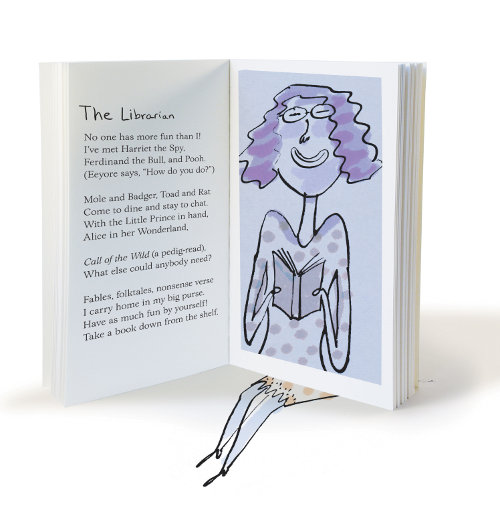
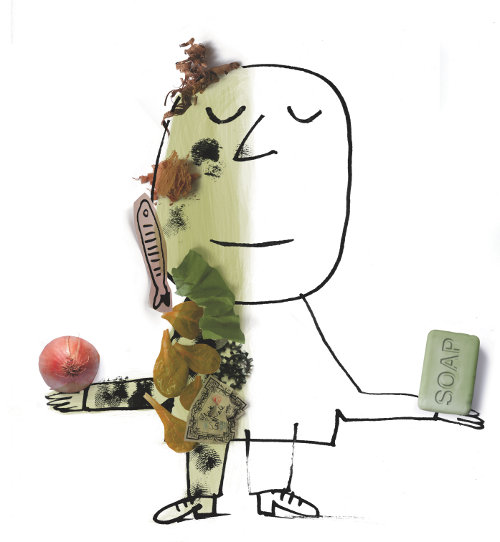
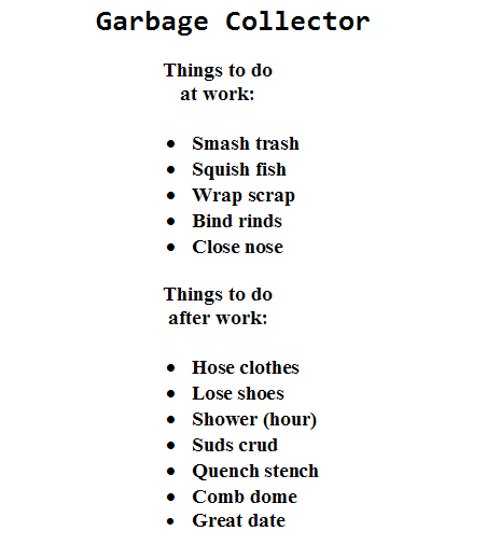
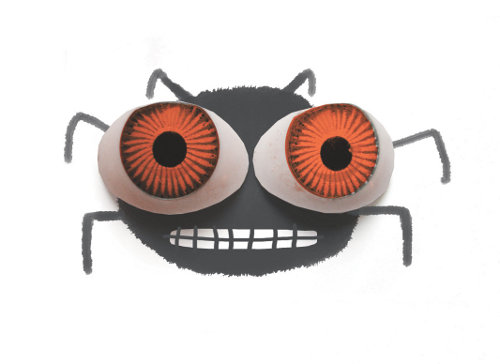

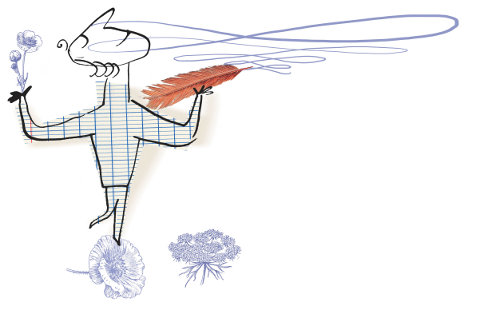
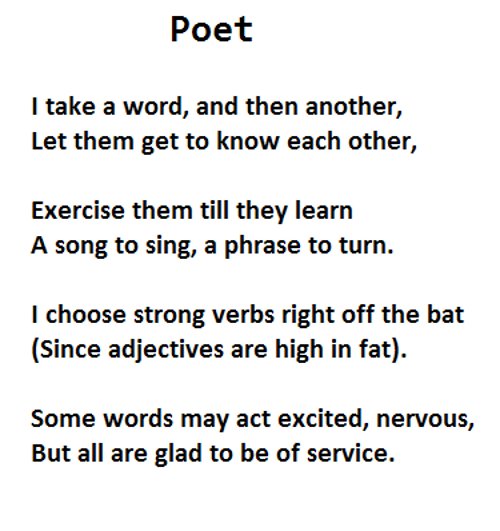

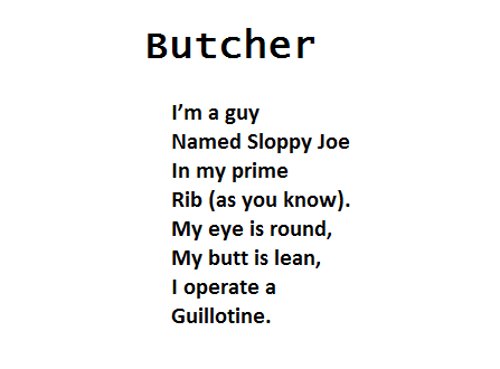
7-Imp: Are you working on any new projects that you can tell me about?
Pat: I am working on a collection of poems about insect faces (tentatively titled Face Book), as well as a second collection of adult poems. {Ed. Note: Pictured below is Pat’s first book of adult poems, published by Laughing Fire Press.} But at the moment, a number of revisions on forthcoming titles seem to be swallowing up most of my time. Thunder Before Lightning: Poems for the Civil Righteous (Chronicle); the soon-to-be-retitled Poetricks (parodies of great poems in math form) (Harcourt); World Rat Day: Poems about Holidays You’ve Never Heard Of (Candlewick); and a series of beginning chapter books that I am doing with Sleeping Bear Press, entitled Tugg & Teeny, about the adventures of two jungle friends, a gorilla and a monkey.

7-Imp: What’s one thing that most people don’t know about you?
Pat: I very recently shaved my head. A moment of silence, please, for the end of the comb-over era.
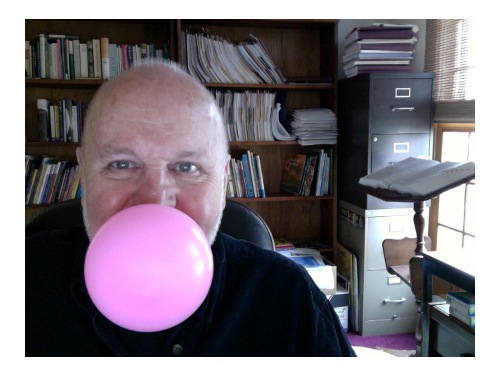
7-Imp: If you could have three (living) authors/poets (or even illustrators) — whom you have not yet met — over for coffee or a glass of rich, red wine, whom would you choose?
Pat: Cormac McCarthy, Henning Mankell, Roberto Innocenti.
7-Imp: Is there something you wish interviewers would ask you – but never do? Feel free to ask and respond here.
Pat: What has been the central event in your life?
Apart from the birth of my three children and five grandchildren, I was extremely fortunate to have been born a twin. I highly recommend it.
7-Imp: Would you, by chance, like to share a never-seen-before poem for this interview. If so, I think that would be especially thrilling.
Pat: Here’s a new, unpublished poem:
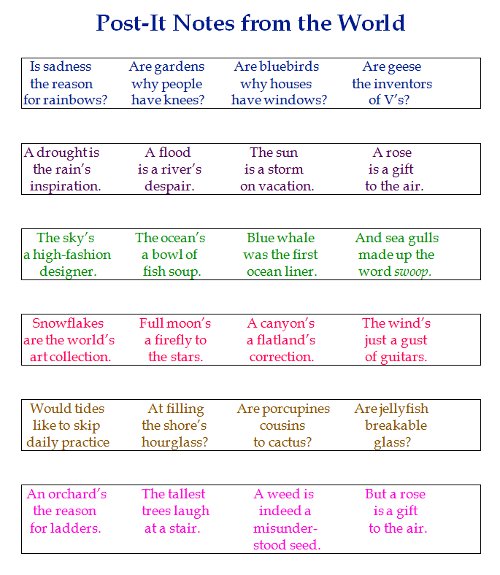

7-Imp: What is your favorite word?
Pat: “Boshblobberbosh” (pace Edward Lear).
7-Imp: What is your least favorite word?
Pat: “Awesome.”
7-Imp: What turns you on creatively, spiritually or emotionally?
Pat: British poetry and detective fiction.
7-Imp: What turns you off?
Pat: Fatigue.
7-Imp: What is your favorite curse word?
Pat: “Limbaugho’reillybeckhannitysavagepalin.”
7-Imp: What sound or noise do you love?
Pat: Silence…amplified. Or my wife, going about her day in other rooms. She’s my white noise.
7-Imp: What sound or noise do you hate?
Pat: Limbaugho’reillybeckhannitysavagepalin.
7-Imp: What profession other than your own would you like to attempt?
Pat: Glassblower… pianist. Glassblowing pianist.
7-Imp: What profession would you not like to do?
Pat: Longhaul trucker.
7-Imp: If Heaven exists, what would you like to hear God say when you arrive at the Pearly Gates?
Pat: “Here’s your eternal library card.”
Author photos used with permission of J. Patrick Lewis. All rights reserved.
THE HOUSE. Copyright © 2009 by J. Patrick Lewis. Illustrations © 2009 by Roberto Innocenti. Reproduced by permission of the publisher, Creative Editions, Mankato, MN.
THE FANTASTIC 5 & 10¢ STORE: A REBUS ADVENTURE. Copyright © 2010 by J. Patrick Lewis. Illustrations © 2010 by Valorie Fisher. Published by Schwartz & Wade Books, New York.
KINDERGARTEN CAT. Copyright © 2010 by J. Patrick Lewis. Illustrations © 2010 by Ailie Busby. Published by Schwartz & Wade Books, New York.
SPOT THE PLOT: A RIDDLE BOOK OF BOOK RIDDLES. Copyright © 2009 by J. Patrick Lewis. Illustrations © 2009 by Lynn Munsinger. Published by Chronicle Books, San Francisco, CA. All rights reserved.
THE UNDERWEAR SALESMAN: AND OTHER JOBS FOR BETTER OR VERSE. Copyright © 2009 by J. Patrick Lewis. Illustration © 2009 by Serge Bloch. Reproduced by permission of the publisher, Ginee Seo Books, an imprint of Atheneum Books for Young Readers, New York, NY.
The spiffy and slightly sinister gentleman introducing the Pivot Questionnaire is Alfred. He was created by Matt Phelan, and he made his 7-Imp premiere in mid-September. Matt told Alfred to just pack his bags and live at 7-Imp forever and always introduce Pivot. All that’s to say that Alfred is © 2009, Matt Phelan.
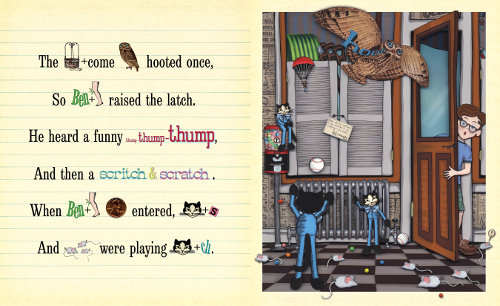
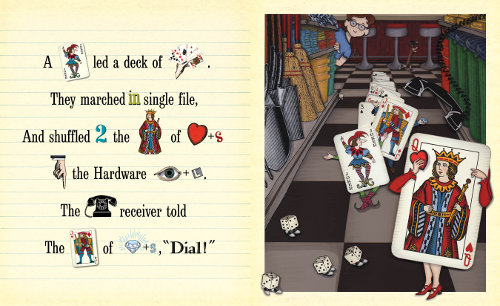



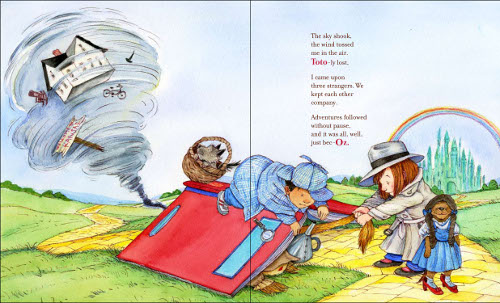

It’s his range that amazes me. No, wait… it’s his wordplay. OK, fine… it’s his glassblowing piano playing skills. But whatever it is, I’m always happy to see a new book or poem of Pat’s come by. Or for that matter, glimpses of some of what’s come before. Thanks for putting this together, Jules!
Sorry, Pat–but you really are AWEsome, in the old meaning of the word, scarily overpowering with your words and images. I grovel at your feet. And then I notice–there is no clay between the those toes.
Yep, a National Treasure.
Jane
Jules, this is one of my favorite interviews ever, anywhere. Love the indefatigable Mr. Lewis! Never will I use that word “prolific” again in the way I have. I love his Post-It Notes from the World, and must soon get my hands on The Underwear Salesman. Along with not worrying about getting my poems published, I will just fire away now, encouraged by all I’ve read here. Thank you.
Fabulous interview.
So glad to have my tea with you two!
Lindsey
Pat is a champion of the art, as both practitioner and supporter. I recommend his essay “Can Children’s Poetry Matter” in Hunger Mountain.
What an impossibly sublime pleasure- virtually breakfasting with J. Patrick Lewis in my dining room this morning! Of special note were the tips for young poets.
Michelle, I KNOW! It’s my very favorite part of the interview.
I love to ask that question, and I understand why some folks say, oh, I don’t want to sound too simplistic or imperious, but I think these wise, smart folks creating the books that our children enjoy and visiting schools and engaging with them have some good ideas — yet maybe never get asked. I love that he answered, and I love love love his answer to that. I want to sky-write it.
(And, personally, I love that curse word, especially on election day, but I digress.)
p.s. I really want to have Metaphor Minutes with Pat, too! If only he were my neighbor….
Particularly love how Pat would go about teaching poetry in schools, his advice to aspiring children’s poets, and his poems “Poet” and “Post-It Notes from the World.” Wonderful interview with a fabulous poet!
Julies, Thank you for this stick-to-your-ribs interview. From Pat’s zany humor to his frank thoughts about teaching, I will be gnawing on this one for a while. (In fact, I think I will link to it for future reference.) How lucky we are to have Pat and his work…
Hi Pat! Thanks to you Jules for this fabulous interview. There’s just so much poetry goodness going on here.
I thoroughly enjoyed reading this interview, and the lavish spreads of course. Thank you both.
A humble swashbuckler of a bow to all for the kind though far too effusive comments. And to Jules, of course, the star in the blogging diadem.
Ever, Pat
Love this interview — “Post It Notes from the World” is simply wonderful.
As Greg said, Pat’s range is mind-blowing. Agree with the National Treasure moniker. 🙂
As a writer myself, I was skeptical here at first because so much of “children’s” poetry is cloying or hyper-cute or just hyper.
But this actually seems charming.
I LOVE that interview — the poems, words, graphics. Thanks for opening more windows out to the world. I’m glad that JP Lewis is alive and making gorgeous things and thinking wise thoughts!!!
Wonderful introduction ans interview. Thank you for the Post-it Poem!!
Jules,
What a terrific interview! I love Pat Lewis. He is SO clever with words–and a true wordsmith–AND he has such a wonderful sense of humor. I first met Pat years ago at a children’s literature conference in Maine. It was so great to see him again at NCTE in Philadelphia last year.
Pat is truly versatile. I can’t think of another children’s poet who is more versatile than he. His book “Freedom Like Sunlight” is an exceptional collection. I so enjoy reading Pat’s humorous verse.
Sorry I haven’t been commenting much lately at 7-Imp–or anywhere in the kidlitosphere. Lots of things going on in my life–and being without my computer for over a week really set me back.
Elaine, no worries. I know life gets in the way of blogging! I adore you, no matter what.
Thanks for visiting, everyone.
Pat’s words are a source of richness in my life–and thank you for showing his adult collection. Off to order that right now!
I have to disagree about “prolific.” I think prolific is something to be proud of. It’s just an insult if it’s followed by “hack!” M-W says “marked by abundant inventiveness or productivity.” I think that’s a fine definition of Pat, Jane, and a few other of my writing heroes. :>)
What’s there NOT to love about this man? What an inspiration!!!!!!!
[…] Many congratulations to J. Patrick Lewis on his appointment by The Poetry Foundation to his two-year tenure as the nation’s third […]
[…] re-posted from my November 2010 interview with […]
[…] Today at Kirkus, I write about the National Geographic Book of Animal Poetry, edited by J. Patrick Lewis. That link will be here this […]
[…] Book of Animal Poetry, to be released in September and edited by Children’s Poet Laureate J. Patrick Lewis. That column is here. This is such a beautiful book. You don’t want to miss it. Today […]
[…] one way you can celebrate? You can grab a copy of J. Patrick Lewis’ World Rat Day (Candlewick, March 2013) and read it to your favorite child. Sub-titled Poems About […]
[…] Thunder Comes: Poems for Civil Rights Leaders (2012), written by J. Patrick Lewis, with a collaborative showcase of six artist illustrators, Chronicle […]
[…] on his plate now — and he shares lots of art, especially from his latest illustrated book, J. Patrick Lewis’ and Douglas Florian’s Poem-mobiles (Schwartz and Wade, January 2014). So I want to get right […]
[…] Today over at Kirkus, I write about a new collaboration from J. Patrick Lewis and Gary Kelley, Harlem […]
[…] I wrote here last week about J. Patrick Lewis’ The Wren and the Sparrow, illustrated by Yevgenia Nayberg, and Michael Morpurgo’s Half a Man, […]